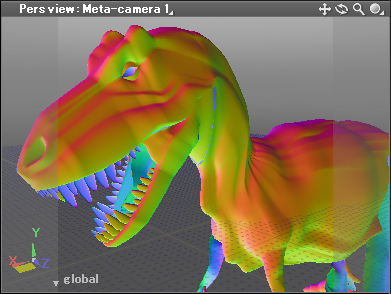Switching Display Modes
At the top right corner of each viewport is the Display pop-up menu, which contains settings related to the display of the corresponding viewport.
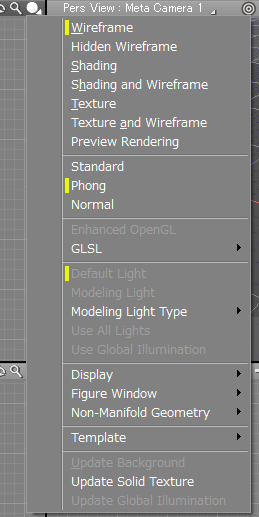
Display Modes
Choose between Wireframe, Hidden Wireframe, Shading, Shading and Wireframe, Texture, Texure and Wireframe, and Preview Rendering display modes for displaying objects.
The display mode can be set separately for each viewport of the Figure Window. Select a display mode from the Display pop-up menu at the top right corner of a viewport to change the display mode for that viewport.
Note Changing display modes can also be done from the Quick Menu.
- Wireframe
- This is the standard, high-speed display mode. The color of the wireframe can be changed in the Preferences Dialog.
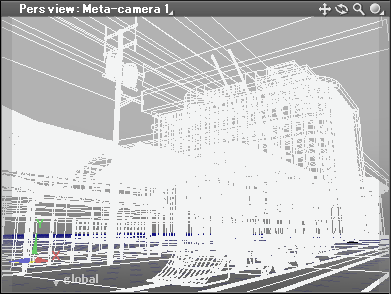
- Hidden Wireframe
- Hiding the wireframe of the back side of objects can make modeling easier.
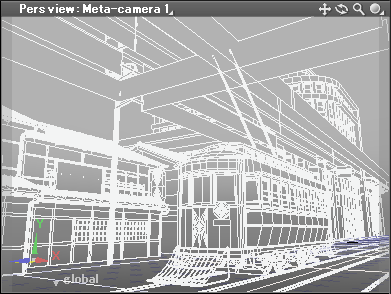
- Shading
- Objects are displayed with their diffuse color and the effects of any distant lights in the scene.
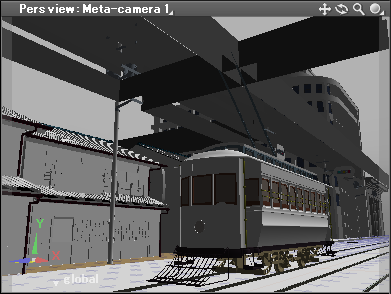
- Shading and Wireframe
- This is a combination of Shading mode and Hidden Wireframe mode. (The wireframe is superimposed on the shaded geometry.) This mode can make selecting object elements easier.
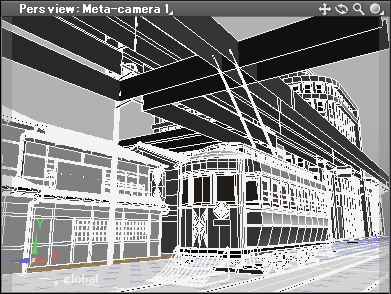
- Texture
- Objects are displayed with textures superimposed on their shaded geometry. This mode makes it easy to understand how the scene will look.

- Texture and Wireframe
- This is a combination of Shading, Texture, and Hidden Wireframe modes. In this mode objects can be edited while still making it possible to check their appearance.
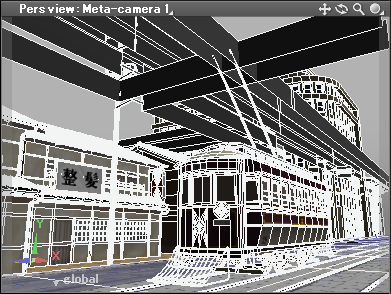
- Preview Rendering
- Objects are displayed closely to how they will appear when rendered. This mode makes it easy to grasp how the scene will look when rendered.
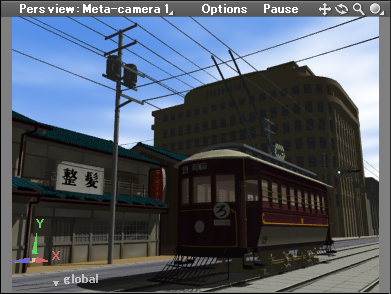
When using Preview Rendering display mode, an Options pop-up menu and Pause/Start button become available from the top of the viewport.- Options Pop-up Menu
- The rendering method and other settings used for Preview Rendering can be specified here.
- Pause/Start Button
- Pauses or resumes Preview Rendering. Clicking the button toggles its function.
Shading Settings
- Standard
- When selected, uses standard functions for shading.
- Phong
- When selected, uses more detailed shading.
- Standard
- When selected, displays the orientation of normals in color.
OpenGL Settings
- Enhanced OpenGL
- When selected, the enhanced OpenGL functions (found in the GLSL menu) become available.
Note In order to use Enhanced OpenGL, the Use OpenGL 3.2 Core Profile checkbox on the View tab of the Preferences Dialog must be unselected.
Note Included with Shade3D Standard and Professsional.
Note A graphics card supporting OpenGL 2.1 or higher is required for Enhanced OpenGL.
- GLSL
-
Note Included with Shade3D Standard and Professsional.
Viewport Lighting
- Default Light
- Uses the standard light to display objects.
- Modeling Light
- Uses a combination of several lights to display objects, designed to make modeling easier.
- Modeling Light Type
- Select from six types of modeling lights.
- Use All Lights
- When selected, the intensity and color of all distant lights and ambient light settings are reflected in the shading.
- Use Global Illumination
- When selected, uses Global Illumination for the shading.
See also Figure Window Global Illumination
See also Modeling Light Types
Note Included with Shade3D Standard and Professsional.
Other Display Settings
Display Sub-menu
- Show Normals
- Displays the normals of curved surfaces, polygon meshes, and line objects.
- Show Bounding Box
- When selected, the bounding box is displayed for each selected object.
- Show Highlight
- When selected, specular highlights are displayed except in Wireframe and Hidden Wireframe modes.
- Show Environment Map
- When selected, environment maps are displayed except in Wireframe and Hidden Wireframe modes.
Note Use OpenGL 3.2 CoreProfile must be selected on the View tab of the Preferences Dialog.
- Show Joint Wireframe
- When selected, joint wireframes are displayed even in Shading and Texture display modes.
- Show Joint Line Wireframe
- When selected, joint line wireframes are displayed even in Shading and Texture display modes.
Note Show Joint Wireframe and Show Joint Line Wireframe are only available in Joint or IK Editing Modes.
- Single Sided
- When selected, shading of the back of objects is not displayed.
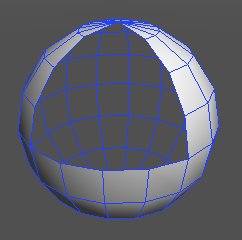
- Double Sided
- When selected, shading is displayed for both sides of object geometry.
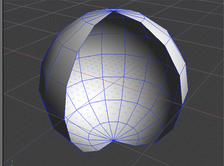
- Double Sided (Color Back Faces)
- When selected, both sides of objects are shaded, with the back faces displayed in the color specified in the Preferences Dialog.

- Flat Shading
- When selected, flat shading is performed with the face normal line vector.
- Color Shading
- When selected, the diffuse color is used for the shading. When unselected, the color white is used. If an object's diffuse color is dark, deselecting this option can make it easier to see.
Figure Window Sub-menu
- Show Grid
- When selected, a grid is displayed in the Figure Window. The grid width is 10 times the dot counter value. The color of the grid and axes can be specified in the Preferences Dialog.
- Show Work Plane
- When selected, the work plane is displayed.
- Show Background
- When selected, a preview of the background is displayed.
Note Use OpenGL 3.2 CoreProfile must be selected on the View tab of the Preferences Dialog.
Non-Manifold Geometry Sub-menu
- Show
- When selected, non-manifold geometry is highlighted.
- Hidden Edges
- When selected, non-manifold geometry behind other shapes (which would normally be hidden) is highlighted.
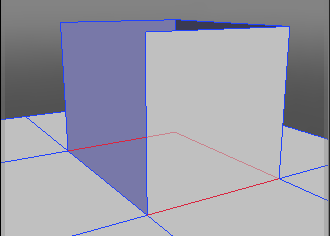
- Bold
- When selected, non-manifold geometry is highlighted with bold lines.

- Show Non-Manifold Edges
- When selected, edges connected to three or more faces are highlighted.
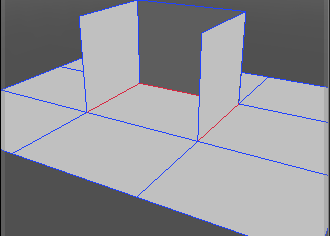
- Show Flipped Faces
- When selected, the edges of faces with flipped normals are highlighted.
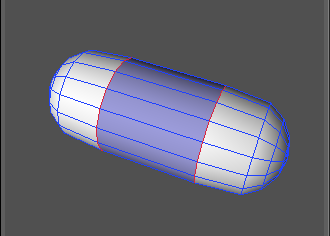
- Show Border Edges
- When selected, edges only connected to one face are highlighted.
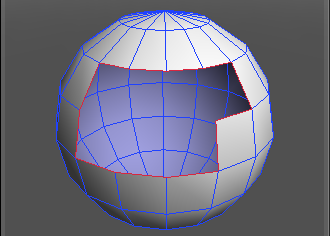
Template Sub-menu
- Load Image...
- Loads an image for use as a template.
- Show Image
- When selected, the template image is displayed.
- Delete Image
- Deletes the template image.
- Template Settings
- Opens the Template Settings Window.
Updating the Display
- Update Background
- Used to update the background if it is not automatically updated with Show Background selected.
- Update Solid Texture
- Updates the solid texture.
- Update Global Illumination
- Updates the global illumination.
Note Included with Shade3D Standard and Professsional.
UV Display Settings
When UV View is selected from the View pop-up menu, these settings are available from the Display pop-up menu.
- Show Color UVs
- Displays the UVs with color shading.
- Show Mapped Image
- Displays the object's texture image.
- Brighter
- Brightens the mapped texture.
- Darker
- Darkens the mapped texture.
